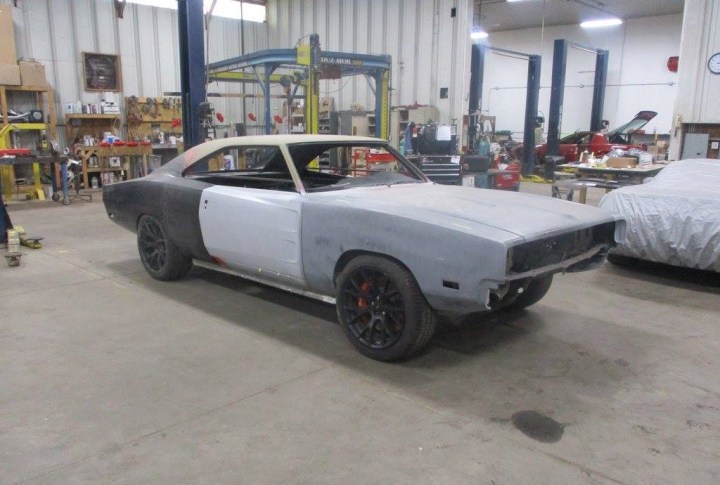
This one-of-a-kind build goes far beyond a mere engine swap. Cleveland Power & Performance started the project by buying a solid 1969 Charger and the body of a 2016 Challenger Hellcat. The company then set out to gather a long list of Hellcat parts including the 707-horsepower V8 engine, the transmission, every part of the suspension, the pedal box, and miles of wiring. That sounds like the world’s most challenging scavenger hunt, but Cleveland Power & Performance specializes in peddling Hellcat parts.
With all the parts ready to go, the builders were ready to tackle the most difficult part. They carefully chopped off both cars’ body panels, patiently grinding away at pieces of metal when necessary, and dropped the Charger’s body onto the Challenger’s newly stripped chassis. The photos from the build make it look as straightforward as putting a plastic lid on a cup of coffee, but the project required countless hours of fabrication work. Custom-made tubular steel rails were installed to preserve the coupe’s structural integrity.
It helps that both cars are, frankly, rather massive, and they use the same front-engine/rear-wheel drive configuration. Dropping a classic Volkswagen Beetle body onto the chassis of a modern, front-engined model would be considerably more difficult.
Cleveland Power & Performance designed and built a one-of-a-kind hood that blends styling cues from the 1969 Charger with design features from the vaunted Challenger Hellcat. Outside, the finishing touches were a set of Hellcat-sourced alloy wheels and a splitter attached to the front bumper. It gives the Charger a clean, contemporary look without going over the top.
The resto-mod continues inside the car, where builders installed the Challenger’s dashboard (which was cut to fit), steering wheel, instrument cluster, seats, and climate control buttons. The car now runs and drives, as evidenced by a video of it doing a burnout, but it’s far from finished. It needs a little bit more sanding to smooth out the rough edges, glass, and a coat of paint. When it’s finished, it’s going to be one of the most stunning classic muscle cars ever to line up on a drag strip.
Editors' Recommendations
- 2024 Dodge Charger Daytona reinvents the muscle car for the EV era
- This 717-horsepower Dodge Charger is the ultimate family sedan




